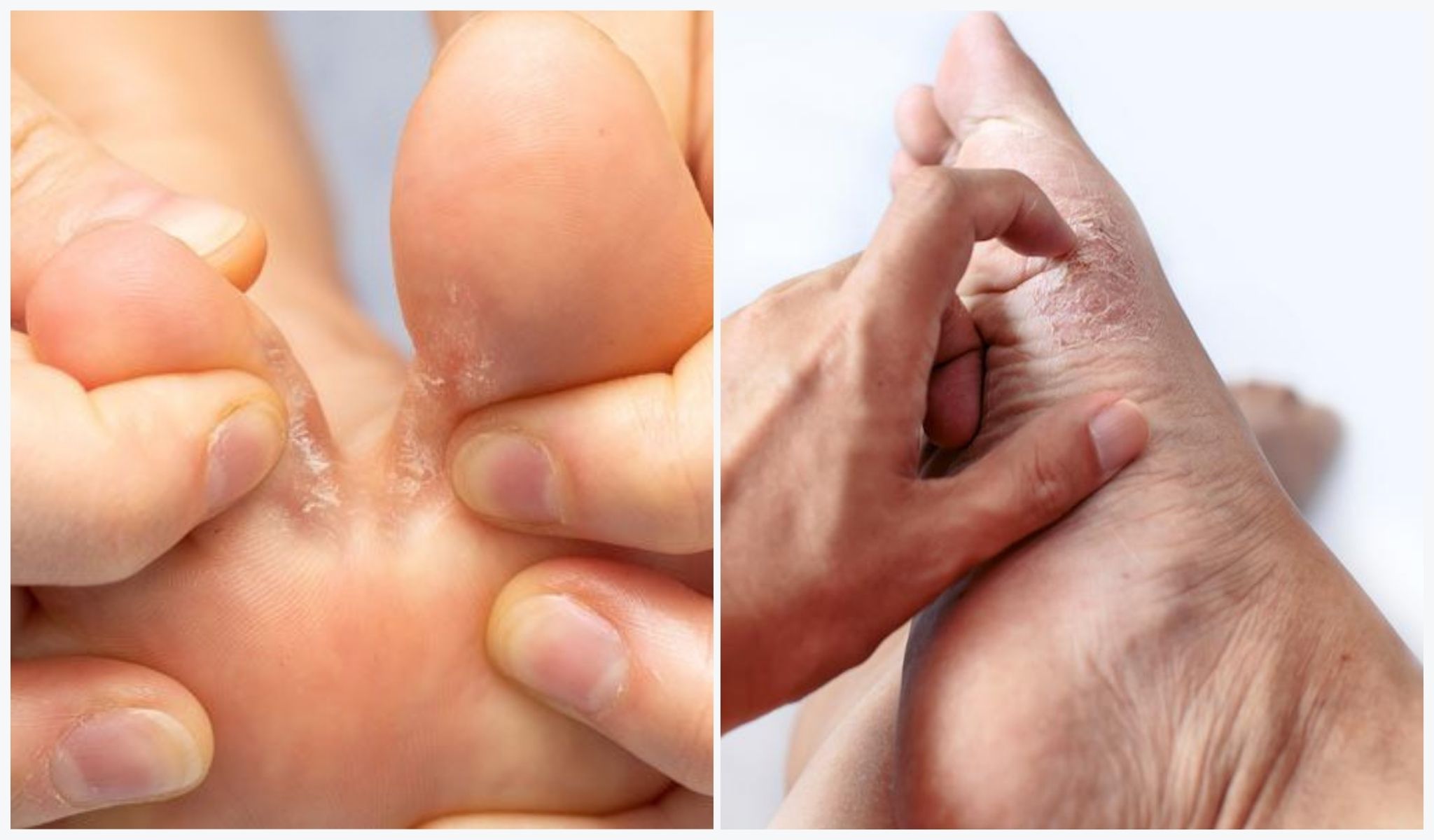Athlete's Foot

What is Athlete's Foot ?
Athlete’s foot, also known as tinea pedis, is a common fungal infection that primarily affects the skin on the feet and, occasionally, the toenails and hands. It’s called “athlete’s foot”.
It is often associated with athletes and people who engage in sports activities, but anyone can get it.
Symptoms of Athlete's Foot
Athlete’s foot is a fungal infection that causes various itchy skin conditions on the feet.
- Itching: Athlete’s foot typically starts with itching, often between the toes.
- Redness and Inflammation: The affected skin may become red, swollen, and sore.
- Blisters: Fluid-filled blisters can develop, causing further discomfort.
- Peeling or Scaling: The skin can become flaky, dry, and may peel, especially on the soles and sides of the feet.
- Cracking and Pain: In severe cases, the skin can crack, leading to pain and discomfort.
- Fungal Toenails: In some instances, the infection can spread to the toenails, causing them to become discolored, thickened, and brittle.
Causes of Athlete's Foot
Athlete’s foot is caused by various types of fungi, primarily dermatophytes. These fungi thrive in warm, moist environments, such as locker rooms, swimming pool areas, and communal shower facilities. Common ways to contract athlete’s foot include:
- Direct Contact: Contact with an infected person’s feet or contaminated surfaces can transmit the fungus.
- Moist Conditions: Sweaty feet, tight shoes, and damp socks create an ideal environment for fungal growth.
- Weakened Immune System: People with weakened immune systems are more susceptible to fungal infections like athlete’s foot.
- Sharing Personal Items: Sharing towels, shoes, or socks with an infected person can spread the fungus.
How to prevent from Athlete's Foot
Preventing athlete’s foot involves maintaining good foot hygiene and taking precautions to avoid exposure to the fungus. Here are some prevention tips:
- Keep Feet Clean and Dry: Wash your feet daily with soap and water, and make sure to dry them thoroughly, especially between the toes.
- Change Socks and Shoes: Wear clean, moisture-wicking socks and well-ventilated shoes. Rotate your shoes to allow them to dry out.
- Use Antifungal Powder or Spray: Apply antifungal powder or spray to your feet and shoes regularly, especially if you are in a high-risk environment.
- Avoid Going Barefoot: In public areas like locker rooms, showers, and pools, wear sandals or shower shoes to minimize contact with contaminated surfaces.
- Don’t Share Personal Items: Avoid sharing towels, socks, or shoes with others, especially if they have an active infection.
- Choose Breathable Footwear: Opt for shoes made of breathable materials, like leather or mesh, to reduce moisture and promote air circulation.
- Manage Sweating: Use foot powders or antiperspirants to control excessive sweating.
If you suspect you have Athlete’s Foot, consult a Dermatologist or Skin Specialist for prescription medication.
